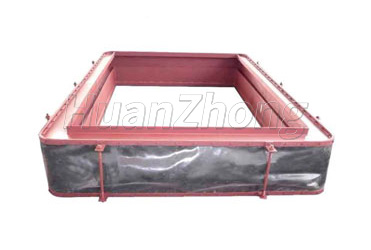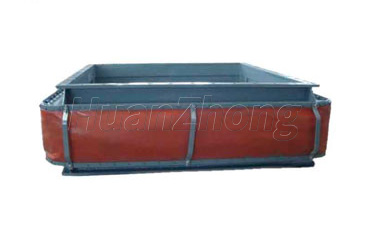Analysis of non-metallic expansion joints
The working pressure of non-metallic expansion joints generally does not exceed 0.5 atm (50 Kpa); the pressure of non-metallic expansion joints can reach more than a dozen atmospheres, or even higher. There are two types of non-metallic expansion joints: single-layer, one or more reinforced layers covered by rubber or fluorine rubber fabric are compounded into a whole to form a lap band material; composite type, consisting of a variety of materials, the layers are superimposed and bonded, sewn or mechanically fastened into one in the pressure plate area.
It is customized processing according to the size of the actual working condition requirements, so that the data of non-metallic expansion joints are also particularly important. Non-metallic expansion joints are available in both round and rectangular sizes, with the round ones requiring the diameter and height dimensions, as well as the required compensation. Rectangular non-metallic expansion joints need to provide a variety of data such as length, width and so on, and non-metallic compensator connection methods are welded and flange type, so in the connection method is also necessary to confirm the size.
At this time, a drawing is needed to mark clearly each specification size yes, the drawing is a very convincing way of communication, on which various dimensional data are clearly marked, and then combined with the actual working conditions. When the pressure vessel is connected, please avoid twisting the non-metallic expansion joint in a twisted state, because the non-metallic expansion joint itself cannot absorb the twisting deformation. When connecting non-metallic expansion joints, please first install the inner side of the non-metallic expansion joint. In addition, when the threaded connection is tightened further, please take special care not to distort the non-metallic expansion joint.

